Barbara London: My guest today is Stan Douglas, the acclaimed Canadian artist who reimagines the mediums of photography, film and video while looking at technology’s role in image making and how those media apparatuses infiltrate and shape our collective memory. Born 1960 in Vancouver, where he still works, Stan has shown several times in Documenta, at the Venice Biennale, and in the Whitney Biennial. Stan’s work often pulls from his interests in music, movies, television and theater, aiming for what he sees as the small moments that are a local symptom of a global condition.
One function of art, Stan says, is to see things we think we know in a different way. Often, he will take an existing narrative and restage it, revealing what he calls the tension between different forces at play. Stan’s latest show, “The Enemy of All Mankind” is currently on view at the David Zwirner Gallery in New York through October 26. Stan, thank you so much for joining me.
Stan Douglas: Thank you. Nice being here.
Barbara London: You live now in Vancouver, and indeed you grew up in Vancouver, which I’ve always thought of as a serious outpost for contemporary art and independent thinkers. You’ve returned to the city for recent work, including an interactive piece that explored the forgotten, bulldozed neighborhood, Hogan’s Alley. I’m very curious, what impact did Vancouver and its culture have on your practice?
Stan Douglas: I’d like to quote page one of the Andy Warhol diaries, where he says, “Nobody in Vancouver likes art.” Basically, that same perception I have as well, where not many people like art in Vancouver. To be an artist in Vancouver, you really have to care about art, and that’s why it becomes a place for people who are making art that are quite committed. And that’s why if we want to travel for seeing art, we don’t go to Toronto, we go to New York City to get that vibe, and these days to Los Angeles, to a degree as well.
But Vancouver is a site that I often draw from in my work, although I do travel around the world and do things away, as well. So, it kind of alternates between things at home and things away, and Hogan’s Alley is actually the place where I lived. I came across this book that was written of interviews of people in my neighborhood for a thing called the Sound Heritage Series that the BC Archive [Royal BC Museum Archive, Victoria, Ca.] made, and they brought up this idea of what was there before, which is Hogan’s Alley. I had no idea.
That led to a whole series of researches, which took me to make Win, Place or Show, at one point, because there was a plan to raze the entire neighborhood, Strathcona, where I live, and Hogan’s Alley was part of that. The goal was to build this sort of modernist complex, kind of a housing for workers in the 1950s, much like this same process of so-called urban renewal that happened around North America at that time.
But later on, I got sort of down into the real nitty-gritty of Hogan’s Alley, trying to understand what this period was between World War II and the 1950s.
Soldiers came back from the war, and suddenly the climate changed and the urban landscape changed for many reasons.
Barbara London: You’ve mentioned how music and DJ culture are close to your heart, so I want to know what the connection for you is there.
Stan Douglas: Music is a fundamental category for me. It’s basically a model of how people endure time together, and you understand that by experiencing music, which is not always anecdotal. Some people think it’s not just about, “I heard this music when this happened,” but actually in the structure itself. There’s content about how we live and how we endure time, how we think about the present relative to the past and what future may be coming. And all that is in music, in various idioms.
The DJ part is because I actually worked as a DJ in the early ’80s, and I kind of learned there. Being a DJ, you don’t play a record all the way through; you play pieces and you’re kind of building a space, you’re building an environment with those pieces. In a way, when I began making my more or less mature art, it was based on that same principle of taking things that are existing, existing culture and redoing that in my own way. In a way, that’s how everything works.
Music is always built on old music. Culture is built on old culture. But the explicit way you can actually take that cultural artifact with a record and reuse it precisely is a feature of the culture in the period we began DJing, from the late 1970s until the ’80s. Even though I often go a long way to rewrite these artifacts I’m using, that same principle holds in a lot of ways.
Barbara London: You were doing the DJing in clubs, I guess?
Stan Douglas: Yeah, just one club, a little club mix. I was working in a coffee bar and then the club next door, they only had sort of big nights, and a tea dance in the afternoons on Saturdays. I kind of said, “If I play records, my friends will come on Friday nights,” and that worked for a while.
Barbara London: You have a big record collection?
Stan Douglas: Not as big as it used to be. After that stint, I’d get broken down and then start selling my records, which you should never do. It’s the worst thing. You’ll look for that record and it’s not there. I have maybe, twenty-five feet of records.
Barbara London: Yeah, twenty-five feet is pretty big.
Stan Douglas: Yeah.
Barbara London: I’ll move on. In 1993, I saw your installation Hors-Champs at the David Zwirner Gallery, which was then in Soho. I was really struck because it was a deceptively simple installation and you conceived of it as a study of the developing jazz idiom of Black American musicians in Paris, during the late sixties and early seventies. There were two projections on opposite sides of a suspended screen. The images presented two related edits of a 13-minute black and white film of a musical performance recorded at the same time.
The recto image is a two-camera TV-like documentary on contemporary jazz. While the verso contains all the other material seen by the other camera. It shows the other musicians when they are not being featured in their solos and reveals the intimacy of their collaboration and cooperation, their participation and pleasure in each other’s music. I think there is a backstory to this very complex work. Is that something you could share with me?
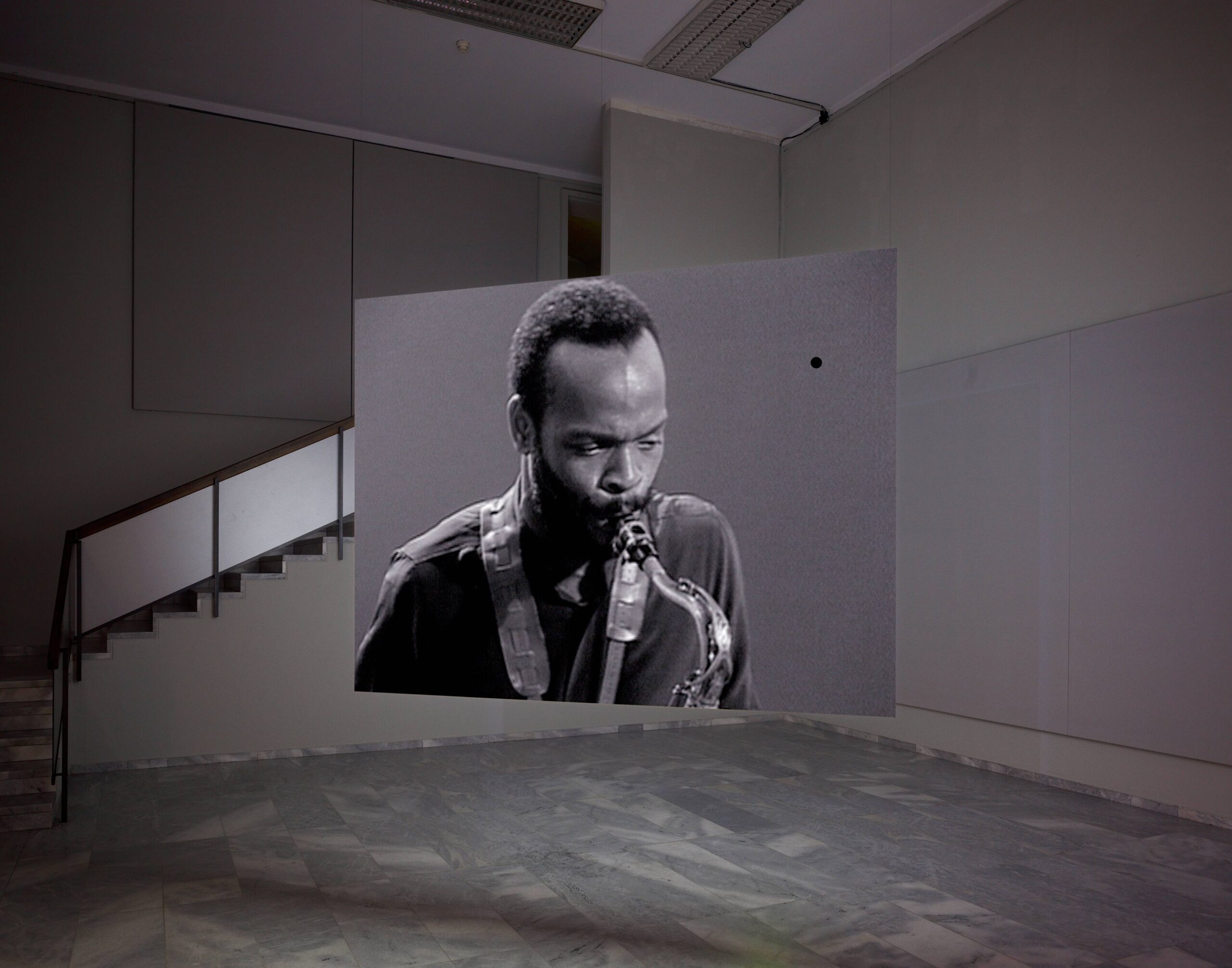
Courtesy the artist and Staatsgalerie Stuttgart, Württembergischer Kunstverein
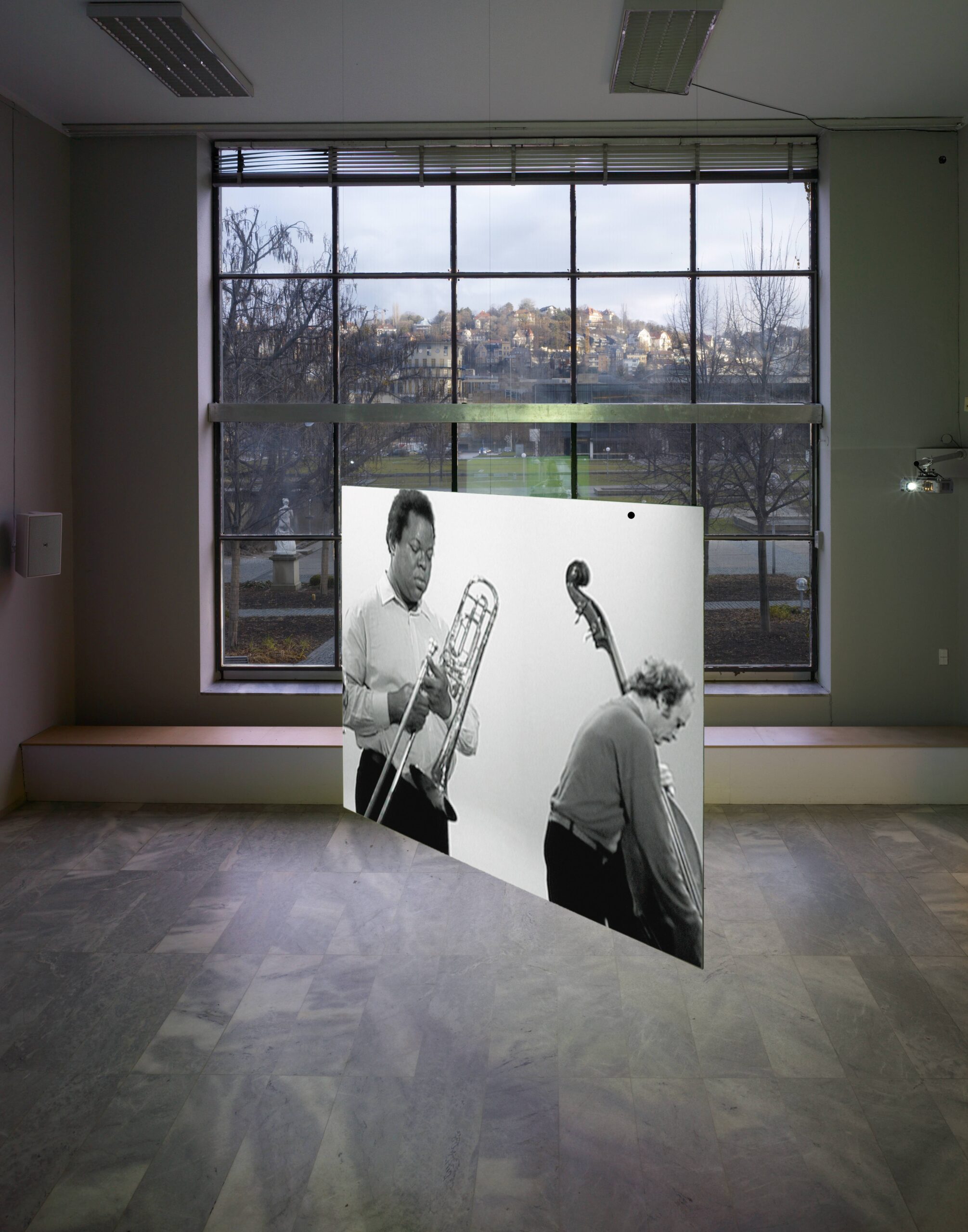
Courtesy the artist and Staatsgalerie Stuttgart, Württembergischer Kunstverein
Stan Douglas: Yeah, sure. In 1992, I wanted to make a work at the Pompidou Center, organized by Christine Van Assche, the curator there. She noticed that the museum had an amazing video studio or TV studio in their basement that never got used. So she invited video artists to come and make work there. I think Gary Hill did a piece, and Tony Oursler also did a piece there. I had recently made work in 1992 called Monodramas and Television Spots, and she invited me to basically do the same thing in Paris. But when I got to Paris, I realized TV culture is not the same as it is North America.
Those works were 30-second, 60-second clips meant to be broadcast with advertising on late-night TV, but it didn’t work like that. Things are not based in the same regular timing of North American TV. In North America, you watch programming to see the advertising; advertisers pay for the program time. Whereas in Europe, at that point it had been thought of as a public service, therefore the station paid for the programming for people to see and be edified by. Anyway, I began looking at a lot of video in Paris at La Vidéothèque de Paris to see what the culture was in that city.
I was amazed by the jazz programs from the 1950s and ’60s, and especially those of a man named Jean-Christophe Averty, who would do live recordings in clubs in Paris. But he also did these very kind of austere studio productions with monochrome sets and black and white abstract shapes that he’d cut between. He was taking more or less straight jazz music — bebop, that kind of thing — in that context. I thought, what if we take that and put a different kind of jazz in that context? Sort of take the more conventional style and place in it more of an irritant in terms of the culture.
Another part of my research was going to listen to radio broadcast of jazz musicians at ORTF [Office de radiodiffusion-télévision française.] I heard one recording of Albert Ayler, doing his first concert in Paris. Ayler is known for his wild performance craft as a so-called free jazz musician. He was also a bit of a musicologist, because in one particular song he has a gospel melody, a country-and-western tune of heraldic fanfare, and also La Marseillaise — a way trying to place himself in France with these relics from American culture, musical culture, and put them all together. Much like I said before, about taking culture and making a new culture out of that. This seemed like a perfect piece to stage there because you would not have a radical performance artist like Albert Ayler in those studios, those stage studios in those days, So that was my material.
Anyway, I met quite a few musicians while I was in Paris, now both working a lot in the free jazz genre. I knew I needed a musical director as well, so I invited George Lewis to do that for me. I had met him in Vancouver, and he kind of said, “Well, those guys are all great, but they would kill each other. Let me make a band for you.” He brought a band of his old cohorts from the ACM [Association for the Advancement of Creative Musicians], Douglas Stewart and also Oliver Johnson and Ken Carter, who were the rest of the band.
In the studio in Paris, we recreated that same look of the vintage TV shows, going as far as to use [cathode ray] tube cameras, which will have kind of a glowing effect with these highlights or shadows to give that really old look. It was two cameras on dollies, which would sort of dolly back and forth, and at a certain point in the song, they’d have a destination for the framing of that austere, Jean-Christophe Averty look, while the other camera is free to look around the space and see what’s going on.
All that is then taken and montaged into one montage of the recto image, which is all the stage studio shots, and the verso image, which is all the so-called outtakes, which, in real life, in broadcast, would just go into the ether. In this case, we recorded them and we see a montage of the outtakes simultaneously with all that work. So, if you’re on one side or the other, you can’t see the other opposite side, so it’s always about making a choice about where to be. Do you want to be with the official version or with the outtake version?
In many ways, it was a commentary on exile because I was interested in the whole history of African-American musicians going back to, I guess, Josephine Baker in the 1920s, and through various generations, usually after World Wars, emigrating and seeing that you could be treated like an artist and not have to make money. And also, the culture was not as racist —or racist in a different way than the U.S., so a lot of people moved there. In a way, the free jazz generation that I was looking at was the last generation of musicians who were involved in that process.
Barbara London: You worked with the amazing George Lewis, Professor of American Music and Area Chair in Composition at Columbia University.
Stan Douglas: I met George before and I called him up to say, “Would you do this for me?”
Barbara London: He’s quite special. I love that you referenced Averty, the great French film director who some people put on the same plane as Ernie Kovacs, for very different reasons.
Your work engages with a wide range of themes that are relevant today, including race, class, gender and mass media. I know for each of your works, whether it’s installation or photography, you carry out unbelievable amounts of research into location, history and technology. You say that your work is often about small moments, “a local symptom of a global condition.” Where do you start with these works: With the big picture or this small view?
Stan Douglas: Like I said in that phrase, I would extract the big view from the small moment and see how within that kernel there’s bigger forces at play and intersecting in those local conditions. I was speaking this morning with somebody about the influence on my work, and one key thing was reading Samuel Beckett’s book, called Proust from 1931. Basically, he unpacks Proust’s massive novel, In Search of Lost Time, in a way that becomes an aesthetic manifesto for him. One key concept for him is that of habit. In habits, people find ways of not engaging with the world directly. You have a habitual way of dealing with things through ideology, religion, whatever. Even just little things, like how do you drive a car and not be distracted by being afraid of the car falling apart or and being afraid of gravity, all those things.
So, habits allow you to shield yourself from the threat of the real, of all these sorts of contingencies of reality. But occasionally the real intrudes and you have to deal with that. And you deal with that either by reinforcing those habits in a very, very extreme degree or by finding a new solution to that new problem. The moments that I’ve been looking at in my work, is looking at these fissures, these moments, these ruptures where the cultural decorum that says disrupted. But how do we go back to business as usual? Or do we find out a new solution to this new problem?
Barbara London: In 1995, I included your installation Evening in “Video Spaces,” the show at MoMA I curated with eight installations. It was the first museum survey of video installation as a form. The show had work by you, Chris Marker, Marcel Odenbach, Gary Hill, Bill Viola, Judith Barry, Teiji Furuhashi and Tony Oursler. Your work, Evening, was very impressive. It had three large projections arranged along the same wall. On the ceiling, in front of each projection was a parabolic speaker that directed the particular audio track downward, heard by a viewer standing in front of the image.
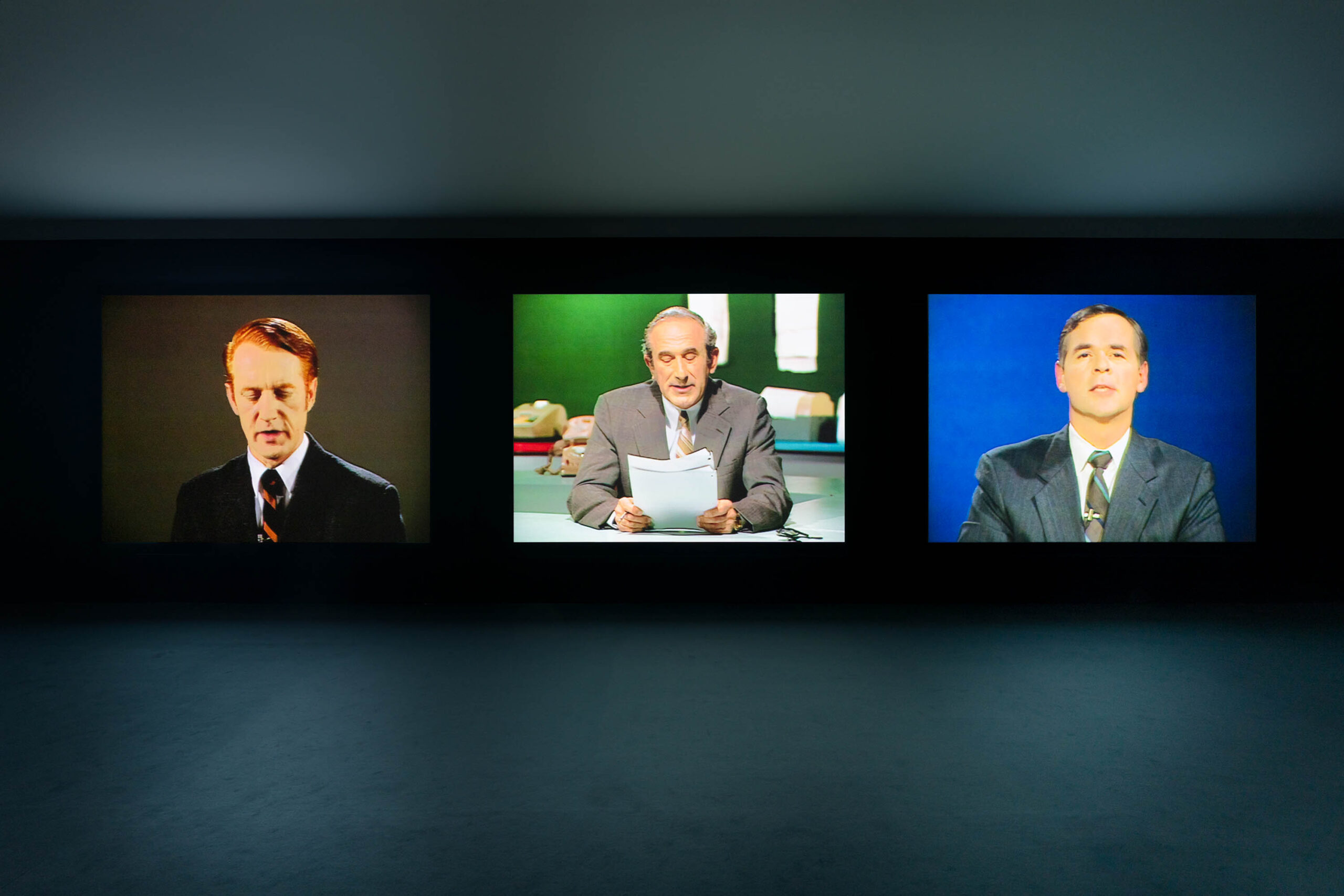
© Stan Douglas
Courtesy the artist, Victoria Miro, and David Zwirner
In the work, you looked at American television in the ’60s, when the networks were becoming less concerned with the sharp editorial content of their newscasts and more interested in enhancing the stardom of their anchors. This was the start of “happy news.” You integrated actual archival clips from television news back then with images of actors you had reading their scripts as if they were newscasters back in the ’60s. In the catalog essay I wrote that your cool analytical approach to media is fundamental to your work. But my question is how do you combine what I see as a very strong poetic impulse with the analytical?
Stan Douglas: Well, poetry is always analytical in some way. Poetry is a way of condensing an experience of the world into a very, very multivalent and tiny package. The poetic impulse in the work is based on this same idea. I would like to think that there are different layers of the work, layers on which you can read them, which are all pointed to the same thing. But the more you know about the subject, the more it reveals. You only need to have the skills you would need to watch TV or watch a movie to sort of parse what’s happening on the upper layer before you drill down. I mean, when I talk, I often talk about the references and people say, “How can we know that?” I don’t expect you to know that. I expect you to sort of understand on a sensual level what’s going on, which I hope is still there to a degree.
So, the idea and what is happening in Evening, for example — that work that is from, like thirty years ago — was basically about these different news channels saying the same stories in very different ways. One is straight news, one is “happy talk” news, and one is on the way going from straight news to happy talk, with an introduction of a new character we see go from one channel to the other. Another aspect, these are funny. Many of these works I’ve done, they sound very serious, all these references, but there are many moments of humor in these works, as well, and very much so in the “happy talk.” Because taking out the purely informative aspect of news — and this is a time when news readers were actually news readers: You see them with paper in front of them and they would read their scripts right up on stage. I was hoping that it didn’t look too stilted, because that’s what they did back in those days. But to go from that, it has some quite funny moments.
Barbara London: It’s really very strong. I love the way you dug out those news clips, the actual clips from the time.
Stan Douglas: Yeah, a lot of the broadcast is stuff I shot, but there are a few clips. It’s funny, what I found going through the archives of WGN in Chicago, like Shirley Chisholm. There’s a bit of her, and also Fred Hampton, who was just assassinated. So there’s a lot of stories about that as well. That was kind of amazing, learning that history about Fred Hampton, what he meant for Chicago and how that was subverted by police. I met Bernadette Dohrn, who was part of the Weather Underground — that was kind of crazy at that point in the 1970s, but later on she became a lawyer working in child welfare. I interviewed her about the whole moment as well, and that was a great experience.
Barbara London: Let’s move on to something very recent. Again, I was very struck by the work I saw in 2022. You represented Canada at the Venice Biennale, where you debuted the installation ISDN. I was really struck by the power of the music and the staging of the installation in a very old building at some distance from the main biennial area in the Giardini. I want to know about why you chose Mahraganat music for a back-and-forth live performance between two cities, two countries, and why the use of old ISDN technology. ISDN stands for Integrated Services Digital Network, a circuit-switched telephone network system that transmits both data and voice over a digital line.
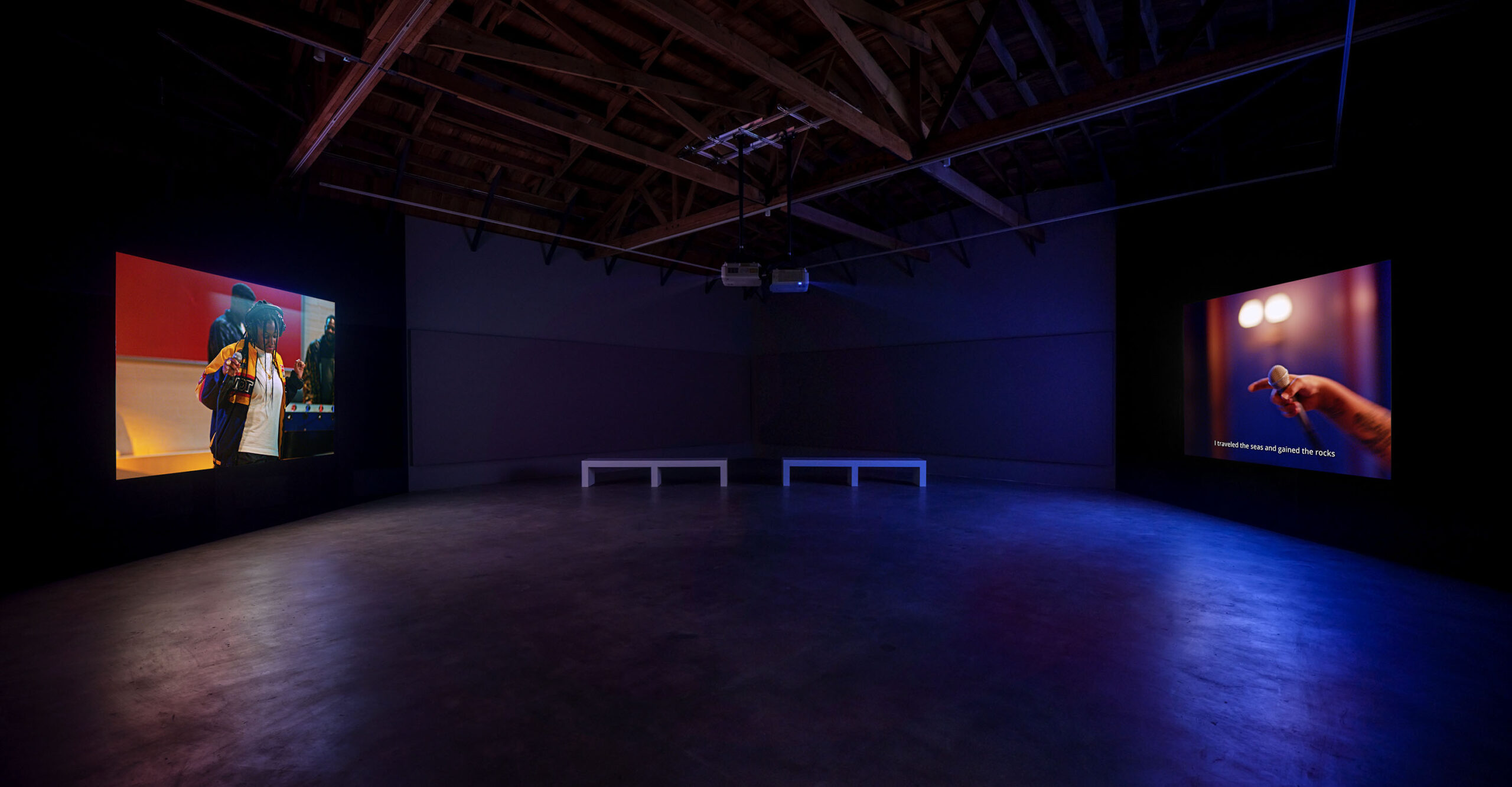
Photo by Elon Schoenholz
Courtesy of David Zwirner
Stan Douglas: I was interested in the whole moment of 2011, and the apparently global protests happening where people were not happy with the status quo and sort of took the initiative to protest for different reasons, different places. But in general, it was a dissatisfaction with the situation. One thing I think that was a factor was that it was three years after 2008. With that economic downturn, austerity was in place in many places, and about 2011, bankers began giving themselves bonuses again. There was dissatisfaction, while the working class was still under austerity. You have these more sort of intuitive things like the riots in the UK, the hockey riot in Vancouver, more organized things like the Arab Spring and Occupy Wall Street — very different places, different conditions, but really revolting against the status quo in different ways.
Anyway, I was reading one book about the 2011 UK riots. The writer talked about being kettled on a bridge during the early riots in the late 2010 and talked about hearing what he thought was dubstep music, but then realized later it was actually grime music. Grime somehow takes the local form of dubstep and combines it with that formula of rap or of hip-hop, where you take electronic beats and a rapper, and you make it into this dance, this party music. I figured, if this happened in the UK, and this became sort of the soundtrack for the UK riots, there must have been something happening in North Africa that was a similar combination, that it happened everywhere. It’s such a popular genre — rap, hip-hop — that many countries make their own version of that. I checked out music from Tunisia, from Palestine, and there’s often things which are carbon copies of American-style rap, but in different languages. But in Egypt, it’s a very distinct style based on Shaabi, which was a sort of working-class celebration music that they updated with electronic instruments, sometimes software-based and surprisingly — or not surprisingly at all, given global culture — they used the same kind of hardware and software, Fruity Loops, especially, to make the music that will be the soundtrack for their raps and their laments about everyday life and, in a sense, of having the same politic of hip-hop or rap, where you say it may be just brag rap, to a degree. But if you’re a person from an oppressed class who’s bragging about how valuable your life is, that is in itself a political act.
The idea of them conversing back and forth over ISDN line is basically my perception of seeing musicians and how they love old gear. Old gear does stuff and does it really well. By 2011, ISDN was more or less obsolete, given the internet, but still, recording studios love that technology. It’s very, very stable, very, very reliable and low latency, and it sounds great. I figured, if some two associates who knew each other disposed of ISDN gear, they could see each other, and this is a way of making that connection between these two cultures. So, they send beats from Cairo over to London and vice versa, and that’s the way the thing goes. That’s the sort of general fiction: One place is in Cairo, and it looks like an old office building. In London, it’s in a community center, which may have that kind of technology, as well. I just put those two together in the sort of fictional background.
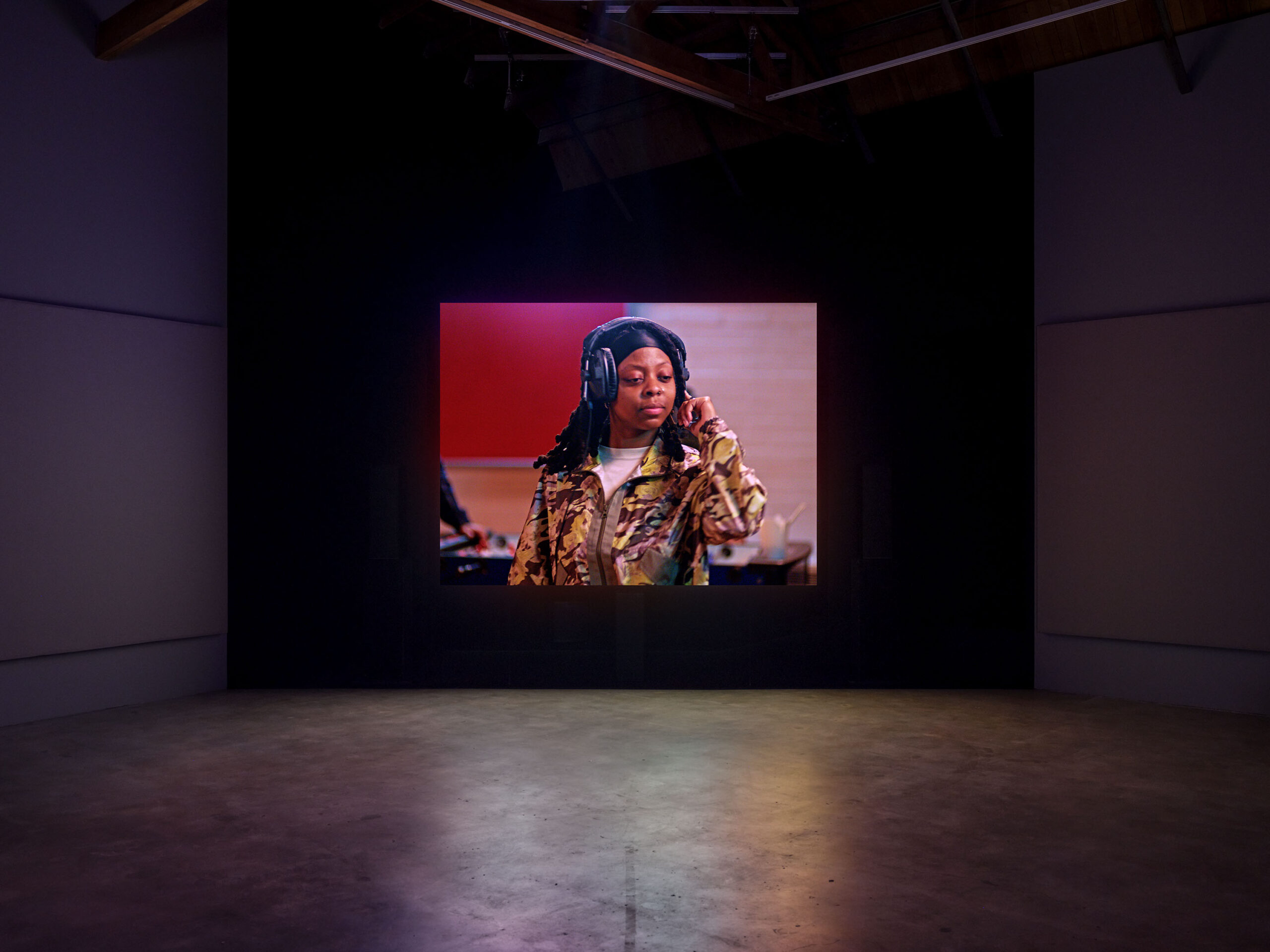
Photo by Elon Schoenholz
Courtesy of David Zwirner
Barbara London: Well, being in the installation, I couldn’t leave. The images were just gorgeous. Stan, maybe you could explain what Mahraganat is, so that even I understand.
Stan Douglas: Mahraganat basically means “festival” in Arabic, and the people who do it are these musicians who are not trained musicians. They’re working-class kids; they can’t be a part of the union, so they can’t play in official venues. People say that they’re banned, but they’re not banned, they just cannot play at unionized venues where the musicians who can read music and all that are playing. But they are self-taught and they play at basically weddings and festivals, that kind of thing. That’s why it’s called “festival.”
Barbara London: And they’re really good. We’ll move on now to a very recent work, and that’s The Enemy of All Mankind: Nine Scenes from John Gay’s Polly. The work consists of your new large-scale color photographs derived from Gay’s 1729 play. I gather you were intrigued by the play’s radically early depiction of transgender and transracial drag, as well as its satirical critique of England’s colonial presence in the West Indies. The pirates in Polly constitute a kind of Maroon creole society at sea, where they enjoyed liberal freedoms and political acceptance not afforded to them on the mainland.
The photographs were shot in Jamaica using Hollywood-level production effects, and you enlisted a cast of actors to read from a loose script, modifying certain elements to bring the themes in line with the present day. The work is about a radically alternative way of living outside the restrictive laws that governed the colonial world and to a degree govern our world still. I want to know, how do you frame works that look back at history and connect to them to today, like The Enemy of All Mankind?
Stan Douglas: I guess the best way to understand freedom is to understand what its opposite is, and the opposite of freedom is slavery. Those who are able to overcome slavery and make something else for themselves, for their lives, is a kind of extraordinary thing. How do you have the will and the energy and the desire and the foresight to make that happen? For that reason, I’ve always had a fascination with maroon culture. The most amazing was the Quilombo dos Palmares in Brazil, which was like a nation of maroon towns in the center of Brazil, where they basically had democracy before Europeans did. But that culture was just so distant from my own that I couldn’t ever imagine a way of staging it myself. You had different things in North America: There was the Great Dismal Swamp in the Carolinas, where Blackbeard used to hang out, but they were not really exciting stories.
As I was doing some research on piracy, I came across the notion that basically there were Maroon cultures on the water. Pirate ships were not really like we’ve seen in Hollywood movies, with a dictatorial captain. In many cases, they operated like a democracy. The crews of the ships had often experienced the British navy, which was awful, dictatorial. When they got rid of their captain, when they mutinied, for example, they thought they could organize this differently than it was before. In a few cases, you had ships where everything was decided collectively, except if they were in pursuit or under attack. Everyone got an equal share. The captain got a double share and the quartermaster got a share and a half. It was kind of an amazing notion.
As I was researching, I came upon a reference to John Gay’s Polly. I’ve always been a fan of Brecht’s Threepenny Opera, number one, which was based upon John Gay’s Beggar’s Opera. To know that he did a sequel — Polly, in which Macheath, or Mack the Knife, is sent to the West Indies as an indentured laborer and escapes and becomes a pirate — seemed like an amazing thing. Polly goes to find her newlywed husband but instead is sold to slavery and has to escape and has these various adventures. It’s really all about her. At one point, she tries to avoid molestation by dressing as a man; that doesn’t necessarily work. At the end, she aligns herself with the Indians. In the original — I make them Maroons because there were no Indians in the West Indies at that point; the Spanish did a very great job of genocide down there. She has an alliance with the Maroons and almost has this sort of amorous relationship with the son of the chief of the Maroons. It’s almost like Some Like It Hot, where he kind of professes his love and she goes, “Well, I’m actually a woman,” and then he goes, “That’s OK.” Then Macheath, in the original, has blackface when he goes to West Indies and is a pirate; in my case, he was passing as white in London and then lets his hair grew out when he gets down to West Indies. But yeah, it’s just nine crucial scenes from that, performed like little playlets and then captured by my camera.
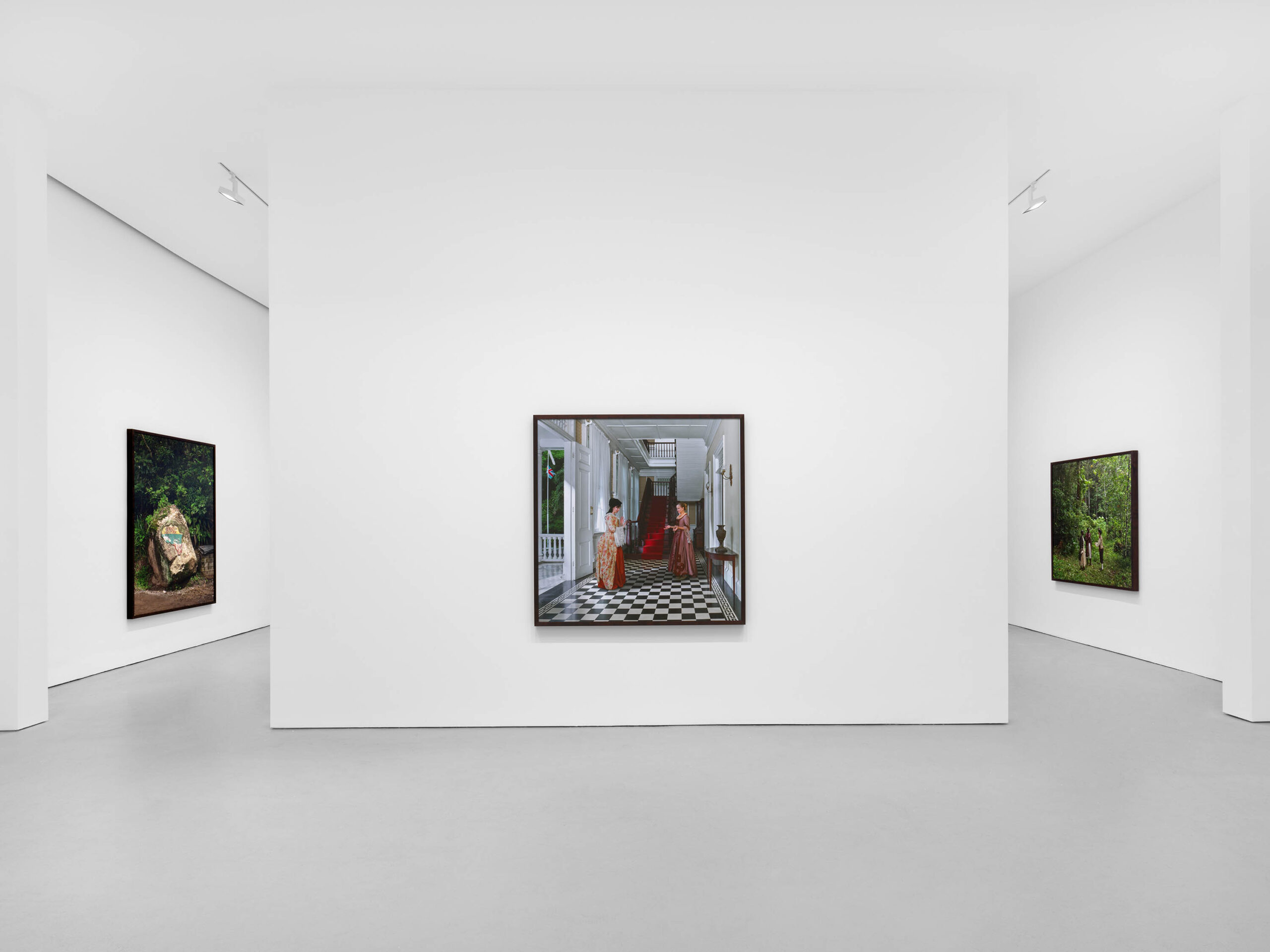
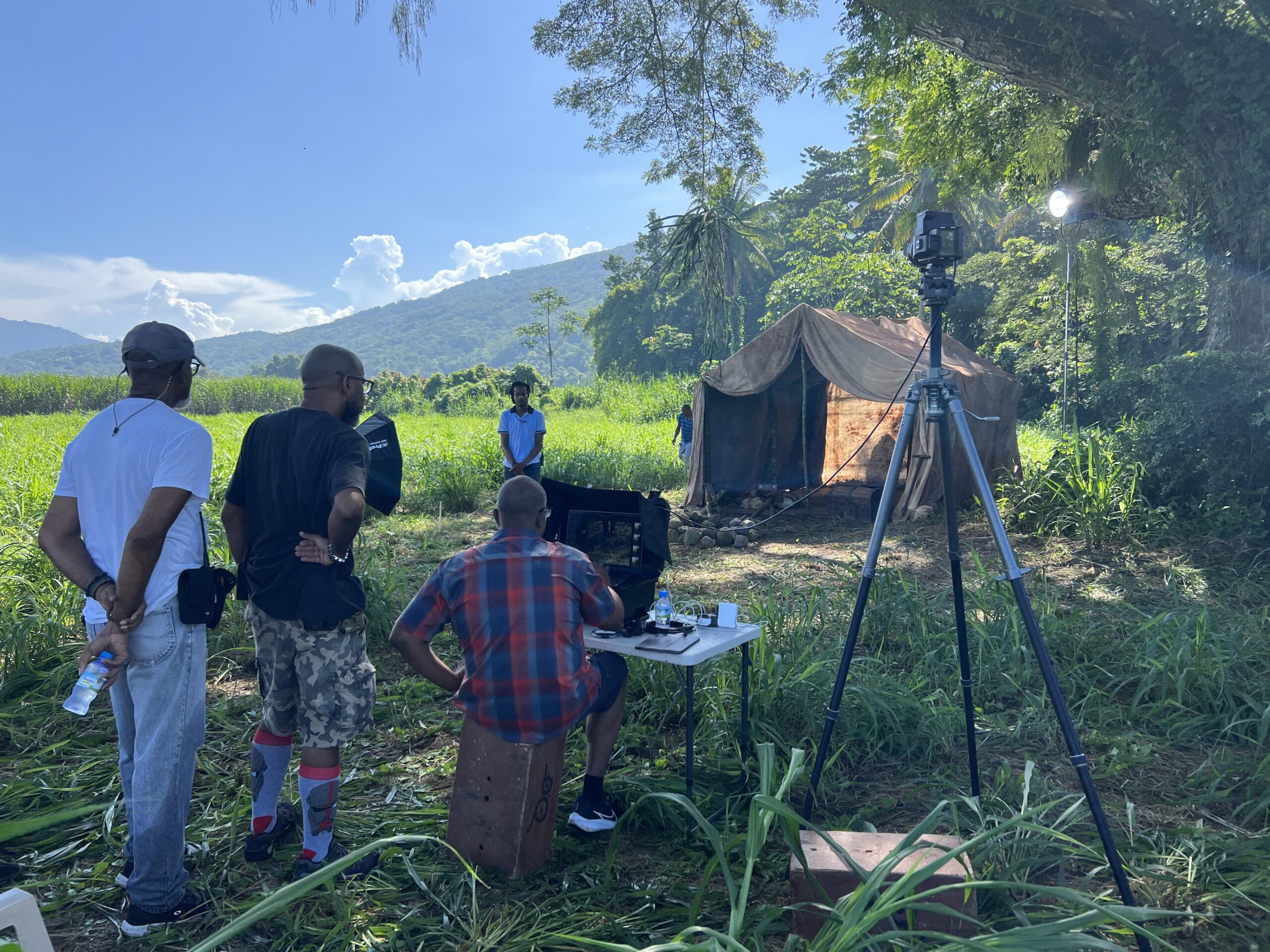
© Stan Douglas
Courtesy the artist, Victoria Miro, and David Zwirner
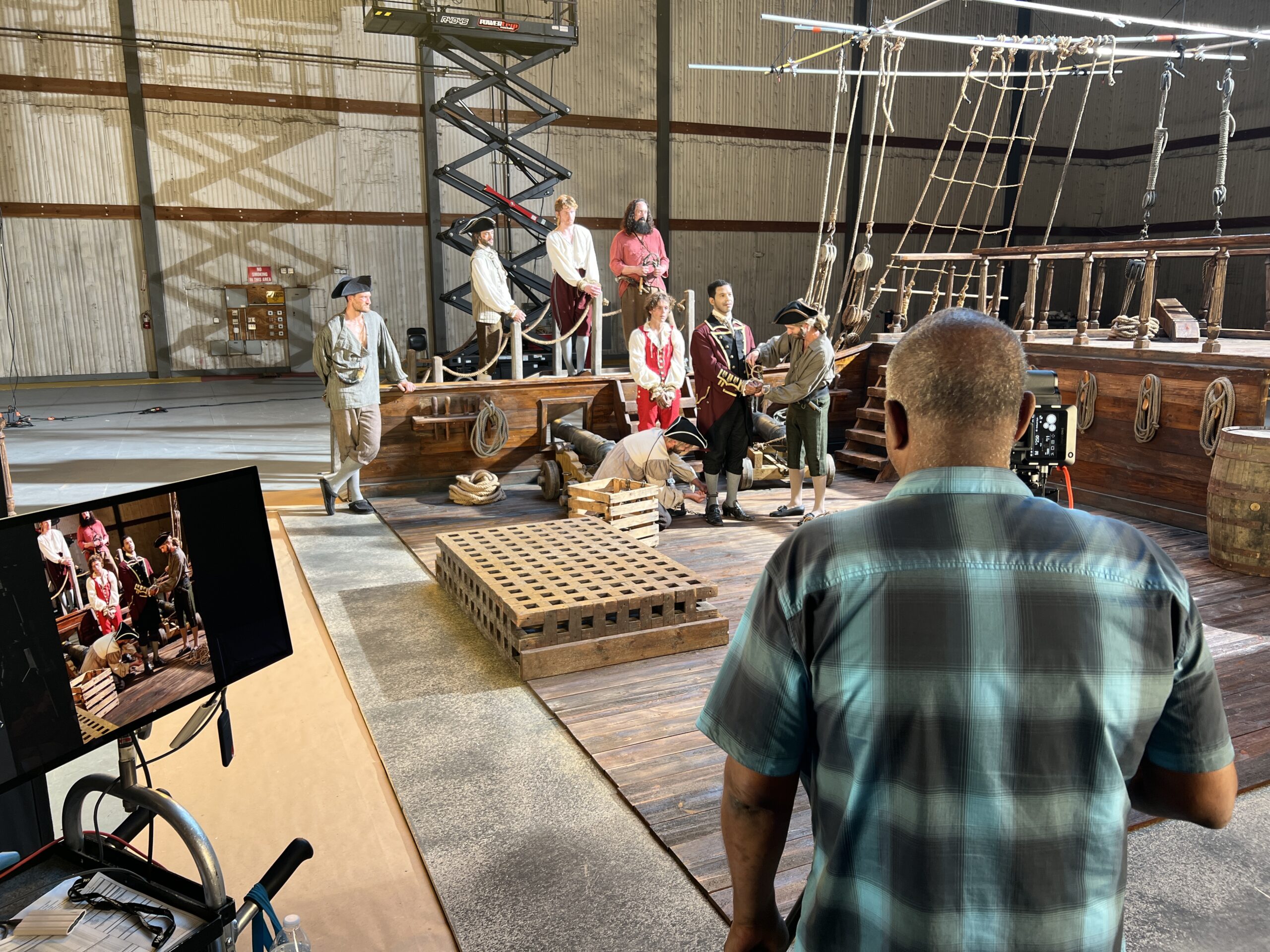
© Stan Douglas
Courtesy the artist, Victoria Miro, and David Zwirner
Barbara London: It’s a remarkable work. Very beautifully made and beautifully installed at David Zwirner’s gallery. Let’s move on to a new work that will be shown in Los Angeles in September 2025. I gather you’re investigating the 1915 American epic silent film Birth of a Nation, directed by D.W. Griffith and starring Lillian Gish. Its plot is part fiction, part history, and you’ve already kind of answered this, but what’s your interest in remixing and remaking old works?
Stan Douglas: I guess when I see a work, one like Polly, that is resonant with today’s culture, certain ideas about gender fluidity, race as a performance as being formative in some way, is something which is very relevant to what we’re seeing today. These are all endemic to John Gay’s play from 1729 or whenever it was, but somehow, he had this sort of vision about how these things were not fixed, how these things were always something that was unstable. And this instability is something which is very relevant to today’s culture.
Barbara London: This may be my last question. Up until recently, you were chair of the graduate art program at Art Center College of Design in LA. How has teaching been important for you? I think it’s important that we bring along the younger generation, so I’m wondering what you would say.
Stan Douglas: There’s a selfish reason for teaching and that selfish reason is that I get to remember things I may have forgotten, because I need to explain them to people. I need to read books well, so I can actually teach those books. I may not understand a bit and I’ll just sort of gloss over it, but in this case, I have to understand what that is. But to be in touch with a younger generation to understand what their concerns are is incredibly valuable. I teach for them, but I also teach for myself.
Barbara London: That’s great. Well, you’re very generous to take the time now. I’m very happy to be in dialogue with you. I really want to thank you very much for taking the time to talk with me.
Stan Douglas: Thanks, and bye everybody.
Support for Barbara London Calling 3.0 comes from the Richard Massey Foundation and from an anonymous donor.
The series is produced by Ryan Leahey, with audio engineer Amar Ibrahim and production assistant Sharifa Moore.
Be sure to like and subscribe to Barbara London Calling 3.0 so you can keep up with all the latest episodes. Follow us on Instagram at @Barbara_London_Calling and check out barbaralondon.net for transcripts of each episode and links to the works discussed.
Web design by Sol Skelton and Vivian Selbo.
Special thanks to Masayoshi Fujita and Erased Tapes Music for graciously providing our music, and thanks to Independent Curators International for their help with the series. Additional thanks to Kerosene Jones and Vuk Vuković.
This conversation was recorded December 3, 2024; it has been edited for length and clarity.